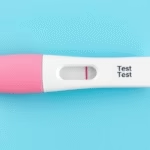Understanding Implantation Bleeding and Menstrual Period
In this article, we will be discussing the difference between implantation bleeding and a menstrual period. Many individuals may experience confusion when they observe unusual bleeding, which can lead to questions about their reproductive health. Understanding these two distinct phenomena is crucial, especially for women trying to conceive or tracking their menstrual cycles.
Implantation bleeding occurs when a fertilized egg attaches itself to the uterine lining, typically happening about 6 to 12 days after conception. This process often causes light spotting, contrasting with a regular menstrual period which is the shedding of the uterine lining when there is no pregnancy. Menstrual periods are generally accompanied by a range of symptoms like cramping and mood swings, while implantation bleeding is usually light, lacking the additional symptoms typical of menstruation. By recognizing the differences, individuals can better interpret their bodily signals and make informed health decisions.
Identifying the Timing of Bleeding
Timing can be one of the most significant indicators in distinguishing between implantation bleeding and a menstrual period. The menstrual cycle usually lasts between 21 to 35 days, counting from the first day of one period to the first day of the next. Ovulation occurs around day 14 in a typical 28-day cycle, while implantation bleeding appears when a fertilized egg embeds into the uterine wall, often occurring a week or so before the expected period.
For women trying to conceive, tracking their cycle can help them understand when to expect implantation bleeding. If light spotting occurs near the time of expected menstruation but feels different, it’s a sign to take a pregnancy test to check for possible conception. Accurate tracking of the menstrual cycle can empower women in family planning and reproductive health.
Evaluating the Color and Consistency of Bleeding
The color and consistency of bleeding can provide valuable clues in differentiating between implantation bleeding and menstrual periods. Implantation bleeding is typically much lighter than menstrual flow. It can range from light pink to brown, while menstrual blood is usually bright red and accompanied by clotting, particularly during heavier flow days.
While implantation bleeding is generally light and spotty, a menstrual period is more consistent and tends to become heavier over the first few days before tapering off. This variance in flow and color can be key when assessing the type of bleeding a woman is experiencing. Noticing these differences can help individuals make sense of their symptoms and address any health concerns appropriately.
Associated Symptoms with Each Type of Bleeding
Knowing the symptoms associated with implantation bleeding as opposed to menstrual periods can aid in making the distinction. Implantation bleeding is usually not accompanied by the same symptoms seen during menstruation such as cramps, bloating, or breast tenderness. It may be serene, lacking the discomfort that typically comes with menstrual phases.
On the contrary, during a menstrual period, many women experience various symptoms that include:
- Cramps or abdominal pain
- Headaches
- Mood swings and irritability
- Fatigue
- Bloating
If bleeding occurs without these additional symptoms, it might suggest it is implantation bleeding rather than menstruation. Listening to your body and noting these symptoms is important for understanding your reproductive health.
Duration of Bleeding
The duration of bleeding can also help in identifying whether it is implantation bleeding or a menstrual period. Implantation bleeding often lasts a few hours to a couple of days. In contrast, a typical menstrual period can last from three to seven days, with varying flow throughout its duration.
Recognizing the brevity of implantation bleeding can provide reassurance to those who are in tune with their bodies. If the bleeding is short-lived and does not progress in volume, it could be an early indication of pregnancy. Tracking the timing and duration of bleeding can offer insights that benefit individual health management.
The Importance of Understanding Your Body
Understanding the differences between implantation bleeding and a period is vital for reproductive health. Knowledge about one’s own body creates opportunities for better health choices and informed decisions regarding family planning. Women may find themselves more attuned to changes and able to differentiate between various types of bleeding, allowing for timely medical consultation if needed.
In addition, recognizing these signs can prevent unnecessary anxiety and help women feel empowered in understanding their healthcare. Those who notice any deviations in their usual patterns should speak with a healthcare provider to discuss their symptoms and understand their reproductive health better.
Final Thoughts
In summary, distinguishing between implantation bleeding and menstrual periods is essential for women monitoring their health and reproduction. Key identifiers include timing, color, consistency, associated symptoms, and duration of bleeding. Understanding these differences can lend clarity during a potentially overwhelming time in one’s life, particularly concerning pregnancy.
As women become more educated about their bodies, it allows them to take charge of their reproductive health, leading to better outcomes for themselves and their families. Each woman’s experience can differ, so being aware of what is typical for one’s body can empower and support health decisions.
It is always best to consult with a healthcare professional if any concerns arise. Keeping a record of the cycle and any unusual symptoms can also be beneficial. Developing awareness around these signs can assist women in recognizing what is normal for them or when to seek further evaluation regarding their menstrual health.
Frequently Asked Questions
- What does implantation bleeding look like? Implantation bleeding typically appears as light spotting that can range from pink to brown and is much lighter than a normal period.
- Can implantation bleeding be mistaken for a menstrual period? Yes, some women may confuse the two, especially if their menstrual cycles are irregular. Paying attention to timing, color, and symptoms can help clarify the distinction.
- How long does implantation bleeding last? Implantation bleeding generally lasts a few hours to a couple of days, considerably shorter than a regular menstrual period.
- What should I do if I’m unsure if I’m experiencing implantation bleeding or a period? If you are unsure, consider taking a pregnancy test if your period is late or consult a healthcare professional for guidance.
- Can you experience symptoms with implantation bleeding? Implantation bleeding is usually without the common symptoms associated with menstruation, such as cramping and mood swings.
Further Reading
What Type of Psychotherapy Is Best for Anxiety?







